Solf story and pamphlet
Dec. 1st, 2007 11:58 amI've finally updated my otter homepage to include the story of David Solf, and to once again make publicly available his original 1972 pamphlet on the natural history of otters. The latter is also available in PDF format.
I am truly ashamed it took me so long to do this. It was 18 years ago that I first promised Solf's sister that I would do what I could to make sure the scientific community learned about David's pioneering work with wild otters. Unfortunately, it required the news that Bettijane has terminal cancer to finally motivate me to fulfill my almost two-decade-old promise. It's shameful being so dilatory, it really is...
I am truly ashamed it took me so long to do this. It was 18 years ago that I first promised Solf's sister that I would do what I could to make sure the scientific community learned about David's pioneering work with wild otters. Unfortunately, it required the news that Bettijane has terminal cancer to finally motivate me to fulfill my almost two-decade-old promise. It's shameful being so dilatory, it really is...
The circumstance that finally got me up to visit Bettijane and Walt Boltmann was their telling me that the old Solf family home in Port Angeles, Washington, was soon going to be sold. I very much wanted to see where David Solf grew up, and time was running out for me to have that opportunity.
My visit took place during the first week of May 1997. (Can it really have been 10 whole years ago?) It would be one of my most memorable experiences.
It was wonderful finally meeting Bettijane and Walt in person. Bettijane was just as warm and friendly as I imagined she'd be, and Walt; he reminded me so much of my own father – tough as nails but a heart of gold. I felt instantly at ease with my new hosts.
I felt the same about the house. Built in 1891, it was perched atop a high coastal bluff overlooking the harbor at Port Angeles.

It's the sort of house that I always dreamed of having – old yet very cozy and comfortable, filled with family treasures, and stories.
Ghost stories, too! I was told that in the master bedroom upstairs dwelt a benign spirit; that of a former lady resident. Appearances were said to be infrequent, but were not unpleasant when they occurred.
I felt so privileged to be given David Solf's bedroom for my own; the room he grew up in, even the bed he slept in. All around were David's personal effects – his books (including his field journals!), his skis, his snowshoes, even a delicate wasp's nest that he'd collected in Alaska.
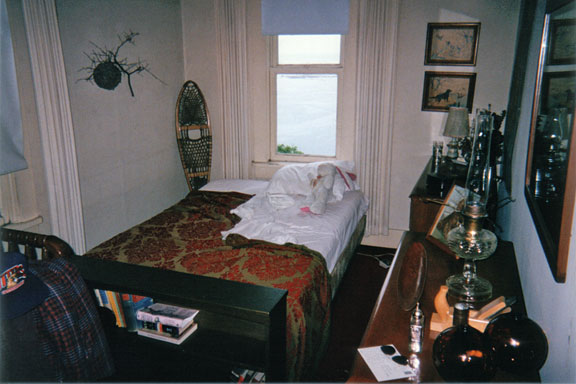
It was quite an amazing experience to be in that space; to look out the window at the sea and see the same view David did, to look up at the ceiling and let my mind wander, just as I'm sure young David did, too. I definitely felt his presence in that room.
Anyway, as I hoped, my visit with the Boltmanns was full of memorable tales. Bettijane had often told me that David's whole life was Alaska, and her stories fully bore that out. I learned about "Seawalk" – David's elder eskimo mentor, who died in the tsunami following the 1964 Alaska earthquake. And "Joe" – a orphaned crow which David raised, and who eventually left to live with the wild crows at Eshamy.
The most poignant part of that story, though, was that one day, a crow was found dead in the front yard of the Port Angeles house. It was taken as an ominous sign, and rightly so, because as yet unknown to the family, David had died the previous day.
So after hearing that story, it was quite remarkable to me that, when my stay was over and I was driving away, I looked back at the Boltmanns waving farewell in their front yard, and directly above them, on a power line, sat a lone crow, also watching me leave.
A fitting, magical ending to a truly magical visit...
My visit took place during the first week of May 1997. (Can it really have been 10 whole years ago?) It would be one of my most memorable experiences.
It was wonderful finally meeting Bettijane and Walt in person. Bettijane was just as warm and friendly as I imagined she'd be, and Walt; he reminded me so much of my own father – tough as nails but a heart of gold. I felt instantly at ease with my new hosts.
I felt the same about the house. Built in 1891, it was perched atop a high coastal bluff overlooking the harbor at Port Angeles.

It's the sort of house that I always dreamed of having – old yet very cozy and comfortable, filled with family treasures, and stories.
Ghost stories, too! I was told that in the master bedroom upstairs dwelt a benign spirit; that of a former lady resident. Appearances were said to be infrequent, but were not unpleasant when they occurred.
I felt so privileged to be given David Solf's bedroom for my own; the room he grew up in, even the bed he slept in. All around were David's personal effects – his books (including his field journals!), his skis, his snowshoes, even a delicate wasp's nest that he'd collected in Alaska.

It was quite an amazing experience to be in that space; to look out the window at the sea and see the same view David did, to look up at the ceiling and let my mind wander, just as I'm sure young David did, too. I definitely felt his presence in that room.
Anyway, as I hoped, my visit with the Boltmanns was full of memorable tales. Bettijane had often told me that David's whole life was Alaska, and her stories fully bore that out. I learned about "Seawalk" – David's elder eskimo mentor, who died in the tsunami following the 1964 Alaska earthquake. And "Joe" – a orphaned crow which David raised, and who eventually left to live with the wild crows at Eshamy.
The most poignant part of that story, though, was that one day, a crow was found dead in the front yard of the Port Angeles house. It was taken as an ominous sign, and rightly so, because as yet unknown to the family, David had died the previous day.
So after hearing that story, it was quite remarkable to me that, when my stay was over and I was driving away, I looked back at the Boltmanns waving farewell in their front yard, and directly above them, on a power line, sat a lone crow, also watching me leave.
A fitting, magical ending to a truly magical visit...
Looking back now, my first phone conversation with Bettijane Solf Boltmann was a true milestone in my personal search for knowledge about otters. Until I found out about David Solf, I genuinely believed that no one before me had studied the animals by direct observation. To learn that I was actually following in someone else's footsteps all along was both humbling and thrilling, because it meant, most of all, that I was no longer alone. I had a peer – a true colleague – at last.
Bettijane was initially quite surprised that someone was inquiring about David. I told her that I, too, was studying otters; how I'd read the pamphlet David had written and how excited I was to see several very new statements in it that were so apt to my otters that I could have written those same words myself. I mentioned that I had spoken with Don McKnight; that he had told me many things about her brother, but that I wanted to learn more about David and his studies, and felt that I could only do that by speaking with his family.
Most of all, though, I told her that I wanted to do what I could to help David and his work achieve broader recognition. It was my belief – and still is – that David Solf really was THE pioneer of wild river otter research in North America; a man easily a generation ahead of his time. Bettijane was very pleased to hear this. She said she was afraid that David had been forgotten. I knew what she meant. Until I stumbled upon that pamphlet, I myself had never heard of David Solf. Here I thought I had known everything in the literature about otters, but I would soon find out that my knowledge was, in fact, egregiously incomplete. I still had so much to discover and to learn.
Bettijane did give me one particularly good piece of news. David's field journals still existed! I was so relieved to hear that. She told me she would have a look through his writings to see if there was something she could send me. Not long after, I received a thick packet from Bettijane containing a copy of a comprehensive summary of David's field notes that he himself had transcribed and typed.
I was simply amazed by all that I found in Solf's notes. They spanned the period from his first otter sighting in August 1954 through to August 1967. Page after page, my esteem for David Solf increased. How I wished I could speak with this man! Barring that possibility, however, his journal entries spoke volumes for him.
I called Bettijane and told her how amazed I was by David's notes; what a treasure trove they were. Everywhere I found affirmation of things that I'd seen at Trinidad. It was a breathtaking revelation. Then I told Bettijane that just a couple of months from now, there was going to be an international meeting of otter researchers in West Germany, and that I'd decided to dedicate a section of my presentation to David's findings. Perhaps needless to say, she was thrilled about that. I felt it was my duty to tell others at the colloquium about David Solf, and that I did.
Tragedy came into my life, however, after I returned from Germany. My mother passed away, and I was swept into the maelstrom of my parents' estate. Then, two years later, the otter population at Trinidad was nearly destroyed by internecine murders (a phenomenon that Solf, too, may have witnessed, judging by descriptions I found in his field notes). All through this dark period in my life, Bettijane and I kept in touch. That was a great comfort to me. I had so few friends in those days. I felt so alone. But time and again this kindly woman let me know that she cared about me, and I appreciated it more than I could express.
One thing that was a continual encouragement to me was her standing invitation to come up to Washington and stay for awhile with her and her husband, Walt. I fully intended to visit them some day, but for all those years when I was bogged down by estate matters, it just wasn't possible. Then, after I got on the internet, I found a partner for myself, and that made planning extra trips a challenge, as well. Finally, a circumstance arose that made a visit to the Boltmann's an absolute necessity...
To be continued...
Bettijane was initially quite surprised that someone was inquiring about David. I told her that I, too, was studying otters; how I'd read the pamphlet David had written and how excited I was to see several very new statements in it that were so apt to my otters that I could have written those same words myself. I mentioned that I had spoken with Don McKnight; that he had told me many things about her brother, but that I wanted to learn more about David and his studies, and felt that I could only do that by speaking with his family.
Most of all, though, I told her that I wanted to do what I could to help David and his work achieve broader recognition. It was my belief – and still is – that David Solf really was THE pioneer of wild river otter research in North America; a man easily a generation ahead of his time. Bettijane was very pleased to hear this. She said she was afraid that David had been forgotten. I knew what she meant. Until I stumbled upon that pamphlet, I myself had never heard of David Solf. Here I thought I had known everything in the literature about otters, but I would soon find out that my knowledge was, in fact, egregiously incomplete. I still had so much to discover and to learn.
Bettijane did give me one particularly good piece of news. David's field journals still existed! I was so relieved to hear that. She told me she would have a look through his writings to see if there was something she could send me. Not long after, I received a thick packet from Bettijane containing a copy of a comprehensive summary of David's field notes that he himself had transcribed and typed.
I was simply amazed by all that I found in Solf's notes. They spanned the period from his first otter sighting in August 1954 through to August 1967. Page after page, my esteem for David Solf increased. How I wished I could speak with this man! Barring that possibility, however, his journal entries spoke volumes for him.
I called Bettijane and told her how amazed I was by David's notes; what a treasure trove they were. Everywhere I found affirmation of things that I'd seen at Trinidad. It was a breathtaking revelation. Then I told Bettijane that just a couple of months from now, there was going to be an international meeting of otter researchers in West Germany, and that I'd decided to dedicate a section of my presentation to David's findings. Perhaps needless to say, she was thrilled about that. I felt it was my duty to tell others at the colloquium about David Solf, and that I did.
Tragedy came into my life, however, after I returned from Germany. My mother passed away, and I was swept into the maelstrom of my parents' estate. Then, two years later, the otter population at Trinidad was nearly destroyed by internecine murders (a phenomenon that Solf, too, may have witnessed, judging by descriptions I found in his field notes). All through this dark period in my life, Bettijane and I kept in touch. That was a great comfort to me. I had so few friends in those days. I felt so alone. But time and again this kindly woman let me know that she cared about me, and I appreciated it more than I could express.
One thing that was a continual encouragement to me was her standing invitation to come up to Washington and stay for awhile with her and her husband, Walt. I fully intended to visit them some day, but for all those years when I was bogged down by estate matters, it just wasn't possible. Then, after I got on the internet, I found a partner for myself, and that made planning extra trips a challenge, as well. Finally, a circumstance arose that made a visit to the Boltmann's an absolute necessity...
To be continued...
It was fortunate for me that one of Solf's old friends/colleagues still worked for the Alaska Dept. of Fish and Game, otherwise I might never have learned any more about him. His friend's name was Don McKnight, and he had known David Solf since they attended Washington State University together in the late 1950s.
Speaking with Mr. McKnight, I sensed that he felt David's loss as though it had happened only yesterday. Solf died at the age of 39, so the element of an early tragic death made the loss particularly poignant. Mr. McKnight told me that David was a commercial fisheries biologist who had spent his whole working career in the region of Prince William Sound; mostly near Cordova and on Chenega Island – and more specifically, that his otter observations took place at Eshamy Bay and Creek where he was the resident keeper of a salmon hatchery. Solf had started his otter observations around 1958 and he'd continued this work right up to his death in 1974. Sixteen years – that was 10 years longer at that point than I'd been studying otters. Solf's experience totally eclipsed my own.
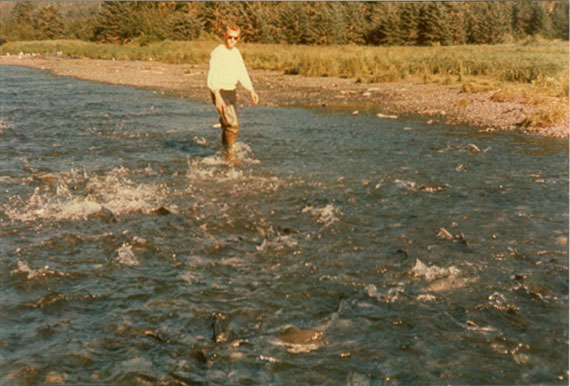
Salmon Run, Sheep Bay, Prince William Sound, Alaska, 1961.
Mr. McKnight then told me something that struck me deeply. David Solf had died of hypothermia after falling through ice while he was tracking otters. On January 16, 1974, Solf had been out on a boat with a Forest Service crew in Olsen Bay when he saw otter tracks on some stream ice, he followed them, and fell through the ice. The boat crew was not able to reach David in time to save him.
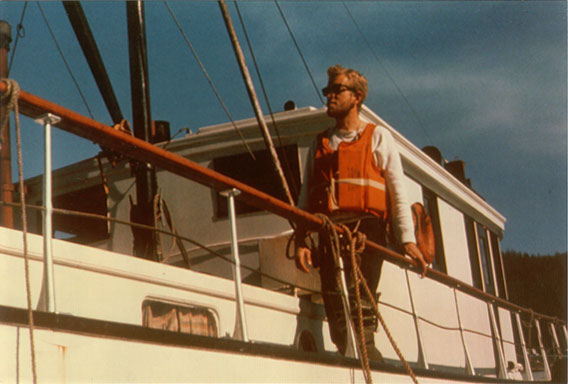
Aboard USFWS vessel "Heron", Prince William Sound, Alaska, 1961.
What can be said about someone who was so dedicated to his personal pursuit of knowledge that he would risk – and lose – his life in that pursuit? Here was a scientist and naturalist who was perhaps the first to study Lontra canadensis in detail by direct observation, and he died in the field during the actual course of his work.
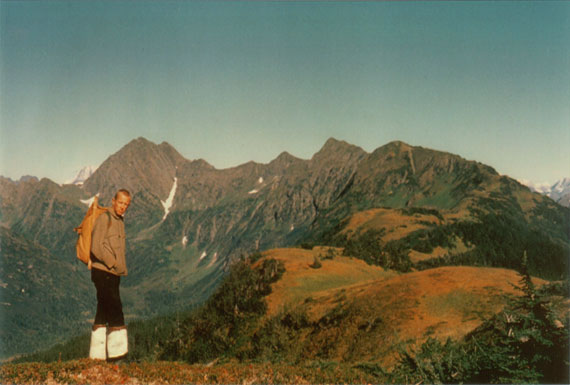
Near Olsen Bay, 1972.
Fully appreciating then not only the pioneering aspect of Solf's work, but also his ultimate, untimely tragic sacrifice, the man became my instant hero.
I asked Mr. McKnight if he knew of anyone else that I could speak with about David Solf. Did he have family? Mr. McKnight told me that as far as he knew, Solf's mother and two sisters still lived in Washington state, and he gave me their contact information.
When I called Mrs. Solf, there was apparently a family gathering taking place at the house at the time. When I told the person who answered that I wished to inquire about David Solf and his otter work, they fetched his sister Bettijane. Meeting her over the phone for the first time, I had no way of knowing then that my relationship to David Solf, his otter legacy and his family was only just beginning.
To be continued...
Speaking with Mr. McKnight, I sensed that he felt David's loss as though it had happened only yesterday. Solf died at the age of 39, so the element of an early tragic death made the loss particularly poignant. Mr. McKnight told me that David was a commercial fisheries biologist who had spent his whole working career in the region of Prince William Sound; mostly near Cordova and on Chenega Island – and more specifically, that his otter observations took place at Eshamy Bay and Creek where he was the resident keeper of a salmon hatchery. Solf had started his otter observations around 1958 and he'd continued this work right up to his death in 1974. Sixteen years – that was 10 years longer at that point than I'd been studying otters. Solf's experience totally eclipsed my own.

Salmon Run, Sheep Bay, Prince William Sound, Alaska, 1961.
Mr. McKnight then told me something that struck me deeply. David Solf had died of hypothermia after falling through ice while he was tracking otters. On January 16, 1974, Solf had been out on a boat with a Forest Service crew in Olsen Bay when he saw otter tracks on some stream ice, he followed them, and fell through the ice. The boat crew was not able to reach David in time to save him.

Aboard USFWS vessel "Heron", Prince William Sound, Alaska, 1961.
What can be said about someone who was so dedicated to his personal pursuit of knowledge that he would risk – and lose – his life in that pursuit? Here was a scientist and naturalist who was perhaps the first to study Lontra canadensis in detail by direct observation, and he died in the field during the actual course of his work.

Near Olsen Bay, 1972.
Fully appreciating then not only the pioneering aspect of Solf's work, but also his ultimate, untimely tragic sacrifice, the man became my instant hero.
I asked Mr. McKnight if he knew of anyone else that I could speak with about David Solf. Did he have family? Mr. McKnight told me that as far as he knew, Solf's mother and two sisters still lived in Washington state, and he gave me their contact information.
When I called Mrs. Solf, there was apparently a family gathering taking place at the house at the time. When I told the person who answered that I wished to inquire about David Solf and his otter work, they fetched his sister Bettijane. Meeting her over the phone for the first time, I had no way of knowing then that my relationship to David Solf, his otter legacy and his family was only just beginning.
To be continued...
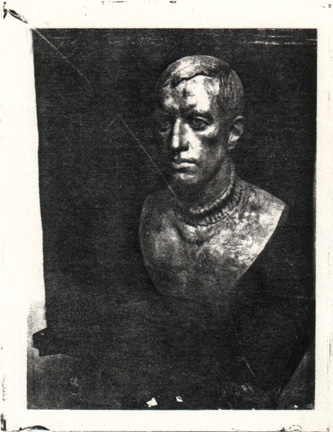 In 1989, I was gathering references in preparation for writing my thesis about the Trinidad otters.
In 1989, I was gathering references in preparation for writing my thesis about the Trinidad otters.Most past research on coastal river otters had been done in Alaska. I was already familiar with three masters theses on the behavior and ecology of coastal otters there, and in their findings, I found statements that suggested to me that the otters these researchers were studying might have a similar social organization to the otters at Trinidad. Nothing really definitive, however, because their studies used radio telemetry and scat analysis, rather than being direct observational studies like mine, so their findings with regard to social organization were only inferential.
Each of these three theses, though, made at least one reference to a 1972 paper by "J. D. Solf" in which this author had apparently described some characteristics of otter social groupings. The paper was not a journal article, however, so I couldn't obtain it through HSU's interlibrary loan service.
At that point I called the Alaska Department of Fish and Game to see if they could send me this paper. Initially I was told it was no longer available, but a secretary at the DFG's magazine Alaska Fish & Game found an old copy of it in her files which she sent to me.
At first glance, I was quite disappointed with this "paper." It wasn't a scientific publication at all; rather, it appeared to be simply the kind of informational pamphlet that you'd find at a park visitors center or a rangers station.
As I read it, though, I quickly changed my mind. This was not the typical re-hash of encyclopedia-type common knowledge that you'd expect in a pamphlet written for laypeople. Some of the things the author was describing made it clear to me that J. D. Solf must have actually observed real otters in the wild at some point.
Then I came to the section on "social habits." As I read through it, my heart practically stopped. What Solf wrote was, in essence, a description of the same type of male social group that I was observing at Trinidad! Quoting:
"Male groups usually consist of fewer than 10 individuals. Larger numbers that are occasionally seen together may represent a temporary association of neighboring groups. The groups have no apparent leader. They travel together and operate as a social unit but do not cooperate in hunting or share what is caught. Travel is over a wide area and apparently there are no exclusive territories. Fighting among them is extremely rare although they are wary of strange individuals."
I was dumbstruck. These were entirely new findings. No statement like this had ever been published before; nothing even close. I realized then that I was not the first person to document large, gregarious assemblages of male river otters, after all – Solf was – but that didn't bother me at all. Quite the contrary – what was important here was that Solf's observations explicitly corroborated my own findings! Someone else somewhere else had seen exactly what I've been seeing, and that affirmation filled me with a sense of genuine exhilaration. My male group was not merely a local artifact. Right then and there, I knew I must get in touch with J.D. Solf as soon as possible and talk to him in depth about his observations.
So I wrote back to Alaska Fish & Game, asking how I could contact Solf. I was quite dismayed by the reply. I was told that J. David Solf had died in January 1974. That was bad news, indeed. Saddened but not dissuaded, I determined to try to get in touch with people who had known Solf, and perhaps even contact his family, to try and find out more about him and his work.
To be continued...